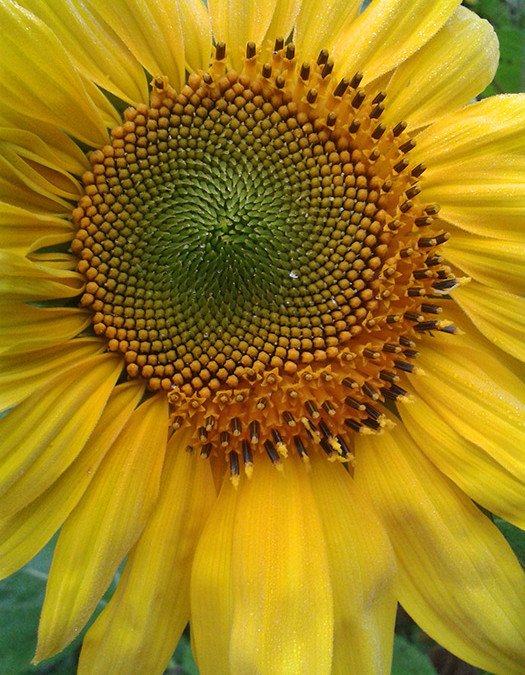 Intention, ritual and relationship to essential spiritual force are all components of the sacred circle. The central requisite to the sacred circle is the invocation of spirit. I use the word spirit here to mean the divine light, the spirit that moves through all things, the unconditional energy of the universe. We may invoke this by speaking our intention. We may sing, drum, light a candle, give prayers, or simply be in the quiet allowing a connection to this great mystery of life. We can lose this connection in our ordinary lives and by meeting in circle we are reminded and this connection is strengthened.
Intention, ritual and relationship to essential spiritual force are all components of the sacred circle. The central requisite to the sacred circle is the invocation of spirit. I use the word spirit here to mean the divine light, the spirit that moves through all things, the unconditional energy of the universe. We may invoke this by speaking our intention. We may sing, drum, light a candle, give prayers, or simply be in the quiet allowing a connection to this great mystery of life. We can lose this connection in our ordinary lives and by meeting in circle we are reminded and this connection is strengthened.
When we invite this connection to spirit, ordinary items seem imbued with magic, their intrinsic value is accentuated; this has a direct relationship to each person being more present to spirit.
Afterwards when we finish it is good to close the circle. It is like opening a door to a sacred space and then when we are finished we close that door. To help to integrate the processes that may have happened it is good to share food, to wash our hands to greet the ordinary.
When we bring our own intention into the circle we are met and gifted back that intention. The intention has more mana for it is literally given a space. How often we have prayed or thrown out intentions half-heartily without the sense of real focus or gifting the intention the space it requires. Immediately we are given an opportunity to have the universe reflect back to us our intention. It is here that we can reflect the power of our will. In the heart of the intention is the power of each one of us as creator. In contemplating this concept, often there is a fear of the destroyer. Creativity and destruction are potently connected. A totara tree is cut down to create a waka. If wisdom and time and a real connection to the forest and the spirit of the forest are considered then there is a sacred relationship between the tree and the person. In the sacred process the tree sacrifices itself and there is a spirit relationship established between the creator and what is being created. Where the creative process is driven by a will that is unable to connect to the life force in all things, then there immediately is set up a relationship which exercises power over, rather than power with the life that you need to create with. Power with is the essence of a co-creative relationship and requires that you meet with and respect what and whom you are working with.
As creators it is important to being part of a community. A healthy culture brings forward an understanding of intrinsic values, of humility, of authenticity and acknowledges the nature of the universe as a mirror. These are the precepts of sacred circle or the codes of awareness.
This belief that others and things have an intrinsic value may begin to shape the society we live in. When this is shaped through extrinsic values we live in a place of judgment and anxiety. Often extrinsic values are based on status and how others perceive us. George Monbiot writes ‘Intrinsic values concern relationships with friends, family and community, and self-acceptance. Those who have a strong set of intrinsic values are not dependent on praise or rewards from other people. They have beliefs which transcend their self-interest.’
Self esteem is a word often used without any real thought of what we might really mean when we use it. We lump it with self-worthiness, we think someone has a lack of self worth, or low self-image. Yet all these words are not really about the self they are intrinsically connected to community and culture.
The word esteem comes from the French word meaning “to fix the price of.” Later it meant to think highly of and also to have an opinion of. It is a word associated with someone else and it reflects the culture as to whom we hold in esteem. Our culture is the culture of self and it is easy to get lost in the illusion of our grand flame and our self creation without any real deep reflection that comes from living and working in a healthy culture. We are also living in a culture where manipulation and power over is used commonly to get what one or a few want. The universe is a mirror and the way we treat and are in relationship with nature is also how we are in relationship with one another. If we live in a healthy culture the word self esteem becomes obsolete.
Through sharing our stories we create community and through an experience of acceptance of our fundamental differences we begin to create healthy culture. In dream circles this nature of the mirror is an insightful tool for as one person shares her dream each person reflects back what they got from the dream, it deepens the dream for the person who is sharing but it also allows a connection and teaching by each person who shares their feedback. When we share in circle we find aspects of ourselves in what other people are sharing and it deepens our own connection to our selves and to others.
The tool of the circle is the talking stick. The talking stick as we know it originated from North American indigenous culture. It held the sacred power of words and when one held it the other members of the circle remained silent and listening. It was created in a sacred manner and had an eagle feather attached to it for courage and wisdom to speak truthfully. It had colours to represent the four directions, rabbit fur to remind the speaker to come to the heart for softness and warmth. Turquoise, to remember the Great Spirit hears the message from the heart and a shell for the constant changes that is life.
In using the stick in circle, its good to take a moment holding the stick before speaking. When you finishing speaking indicate you have finished and put the stick down in the centre. Some people will stand up and walk around the circle before picking up the stick and again after speaking. Rather than pass it along a circle it is offered back to the circle as an invitation to who would like to speak next. In speaking from the heart we may feel a sense of vulnerability. Rather than immediately close it off, or flick back to old patterns of defense and protection it is worthwhile to stay with the feeling. The talking stick offers a space to find yourself with others.
Carol Lucust describes the talking stick as carrying “respect for free speech and assures the speaker he has the freedom and power to say what is in his heart without fear of reprisal or humiliation.” In a circle we bring our presence to the circle, we bring our exploration, our knowing and our not knowing. We bring our uniqueness. We are the circle. Rather than following a leader, leadership is integral in each of us when we share and explore equally together.




